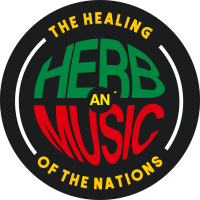02 Dec The Best Methods for Coping with Stress in the Age of Uncertainty

The Best Methods for Coping with Stress in the Age of Uncertainty
“It’s crucial to nourish the body and soul, and try to avoid the major triggers causing the most stress. Patience and the consumption of high quality food is critical. Build a self-care toolbox, allow for plenty of rest, and create space for stillness in your mind.”
Words: Alicia Faris – Certified Holistic Nutritionist
Path to Panacea – www.pathtopanacea.com
There’s no doubt 2020 will go down in history as the year that shook the globe. Uncertainty has been at the forefront, serving as a precursor for anxiety, stress, and ultimately adrenal fatigue. Collectively, we will feel the effects of this moment in history for many moons to come.
As a rule, humans prefer certainty to uncertainty. Studies have shown that people would rather definitely get an electric shock now, than maybe be shocked later, and show greater nervous-system activation when waiting for an unpredictable shock. Because uncertainty is not an overt, physical object or situation, we can’t literally run away from it like we can from a predator or a social situation.
What matters most in times like these, are the coping mechanisms we have in place to deal.
Turn on the tunes, light up your spliff and settle in.
Our not-so-distant ancestors’ concept of a day was fairly basic; seek food, clean water, and shelter from the elements. Sometimes, on this journey, they would stumble upon something that would pose a true threat to their lives; be it a ferocious animal, a powerful storm, or an extended period of hunger. We humans developed innate tactics for survival via the fight-or-flight response. Over time we formed an amazing hormonal and physical response to these stressors.
It is assumed that these stressors were more acute, and not prolonged as stress tends to be today. Due to the pace at which the world has changed, and the state it’s in today, we now encounter situations that elicit the exact same responses in our body on a very regular and continuing basis. If something as simple as deciding what to wear can turn on our body’s “run from mountain lion” stress response system, imagine the mileage those systems have gotten this year. Over time, this chronic stress can wreak havoc on our system.
Here we examine these stressors and how they affect the body. We look to diet and lifestyle to suggest ways to prevent and manage chronic stress.
Stressors can be positive or negative, large or small. Despite the deemed threat of the stressors, our bodies produce the same response. This is why it’s so important to manage any stressful situations, looking at ways to ease and strengthen the body’s natural response. Emotions are the most frequent activators of chronic stress.
A stillness of the mind and regular meditation practice can prove especially helpful. To function optimally the human body requires the right balance of chemicals (hormones, neurotransmitters, enzymes, and immune cells), which are created from the food we eat. Without the right supply, your internal communication network starts to break down. Chronic stress alters this balance. It disrupts the internal cell communication network, and it does so in a big way.
The General Adaptation Syndrome, coined by Dr. Hans Selye, is the manifestation of stress in the whole body as they develop in time. Our adaptation response to ensure our survival in time of stress follows 3 steps: alarm, resistance, and state of exhaustion. First, the alarm reaction precipitates readying the body for action. The hypothalamus is activated, alerting the autonomic nervous system, thus resulting in an immediate sympathetic response. This results in an increase in blood sugar, heart rate, and blood pressure, as the adrenal cortex produces and releases stress hormones, namely cortisol. Cortisol, both catabolic and anti-inflammatory, mobilizes energy out of storage sites for use by the muscles. It increases amino acids, stimulating the liver to convert them to glucose, as well as increasing fatty acids in the blood to be used as fuel.
This is the fight-or-flight response. Once the perceived threat has passed, the negative feedback loops governing the SNS and HPA axis allow the body to return to a state of equilibrium. The parasympathetic nervous system helps the body find homeostasis, through the release of the neurotransmitter acetylcholine.
But what happens when the stressor remains active? See: 2020. The body remains in a state of hyperarousal and regaining homeostasis is near impossible. The negative feedback loop begins to malfunction and the adrenals continually produce cortisol. The pituitary begins to develop a resistance to cortisol and following, is the resistance phase. As cortisol is continually being released, blood sugar persistently rises as well.
This leads to the overproduction of insulin, eventually causing blood sugar levels to fall to exceedingly low levels. The body begins to store this extra glucose at fat, typically around the midsection. High levels of circulating cortisol have been associated with poor cognitive function, depression, impaired thyroid function, hyperglycemia, decreased bone density, insomnia, elevated blood pressure, and lowered immune function.
Finally, the body reaches a state of exhaustion, just as it sounds, the constant adaptation eventually begins to decline and the body is unable to return to homeostasis. Adrenal fatigue and many other health concerns will ensue. The body is a whole system and we must recognize that when one part isn’t properly functioning, it will throw other networks out of balance as well.
The first step in restoring health sounds obvious: de-stressing. Easier said than done. While we cannot take away the uncertainty that is 2020, we can take some time to be present in our bodies, acknowledge our feelings, and keep going. Step away from social media, un-plug, and re-charge. It’s crucial to nourish the body and soul and try to avoid the major triggers causing the most stress.
Mindfulness and gratitude practice can go a long way when reacting to potentially stressful situations. Be patient with yourself, and others. If you’re experiencing adrenal fatigue, it took some time to get here and will take some time to restore health as well. Patience is important and the consumption of high-quality food is critical.

Recommended synergistic foods, nutrients, and herbs:
Supplying your body with healthy fats and proteins will provide the substrate for crucial hormones, neurotransmitters, and enzymes to be built. In order to balance blood sugar, it’s important to eat regularly, and have healthy booster snacks as needed. Clean proteins, either from plants or pastured animals will provide the legos the body needs to build and rebuild.
B complex vitamins from foods such as wild salmon, dark leafy greens, eggs, mushrooms, pastured meats, organs, seafood, sweet potatoes, and whole grains will be especially helpful in increasing energy and busting stress. These vitamins play an important role in cell metabolism. Improving your metabolic pathways boosts your energy levels and is a great way to reduce fatigue.
Vitamin C and bioflavonoids are directly involved in the production of cortisol in your adrenals. Besides the array of other benefits such as boosting your immune system and lending protection from free radicals, vitamin C is also an essential building block for the recovery of the adrenal glands. Foods high in vitamin C are apples, bell peppers, citrus, cruciferous veggies, kiwi, parsley, spinach, and strawberries.
Potassium is a key dietary recommendation for supporting the adrenals. Best to consume foods that are rich in potassium and lower the intake of sodium. The recommended dietary ratio of potassium to sodium is at least 5:1, where most Americans are getting 1:2. A nutrient-rich diet can produce a ratio of 50:1 and most whole fruits and vegetables have a ratio of more than 100:1. Eliminating fast and processed food will greatly improve K:Na ratios. Avocado, spinach, beet greens, cabbage, garlic, lima beans, sweet potatoes, and tomatoes are great whole food sources of potassium where it is most bioavailable.
Magnesium containing foods such as almonds, broccoli, flaxseeds, kelp, pumpkin seeds, spinach, chard, and halibut are excellent choices to support the adrenals. Magnesium promotes relaxation for the muscles, mind and body, reduces anxiety and panic, and can be helpful for sleep. It is critical for every cell in the body and over 300 enzymatic functions, as well as playing an important role in hormone and nutrient distribution.
Dark green vegetables help to calm the body and support relaxation. Prevalent minerals such as magnesium, potassium, and calcium aid the adrenals, and chlorophyll assists the parasympathetic nervous system in providing a calming balance for the whole body. Beet greens, broccoli, chard, collard greens, dandelion greens, kale and spinach are great choices.
Nervines are gentle herbs to calm and strengthen the nerves. They provide excellent support to protect and restore adrenal balance. Best with regular, continued use, their micro and phytonutrients help the body to remain calm in the face of stress. Best to try them alone or in simple combinations for 30 days to feel the effects. Rotate every 6-8 weeks to allow your body to experience many different compounds. California poppy, chamomile, gutu kola, kava kava, lavender, lemon balm, oats, passion flower, skullcap, valerian, and vervain are common choices. Many of these can be very relaxing, so taking them in the evenings is recommended.
Adaptogens are a class of herbs that help to stabilize the endocrine system. They are known to normalize adrenal function, help manage stress, fatigue, and hormone imbalances as well as restoring health, vitality, immunity, stamina and promoting longevity. They have the unique ability to help you adapt to stressful situations. Additionally, they have profound antioxidant and anti-inflammatory effects to protect cells from damage. Some examples are American ginseng, ashwagandha, devils club, tulsi basil, licorice, rhodiola, schizandra berry, and Siberian ginseng. Always consult with your doctor before beginning any herbal regimen.
The road to recovery is going to be a long one for us collectively. It’s important to love yourself, and be patient. It can take years to recover from prolonged chronic stress. Build a self-care toolbox, allow for plenty of rest, and create space for stillness in your mind. Each of us has unique biochemical needs, and our path to panacea requires personalization. So determine the self-care practices that work for you and prioritize them. A patient and positive attitude coupled with some healthy diet and lifestyle changes can provide some well-deserved relief to your grateful body.

